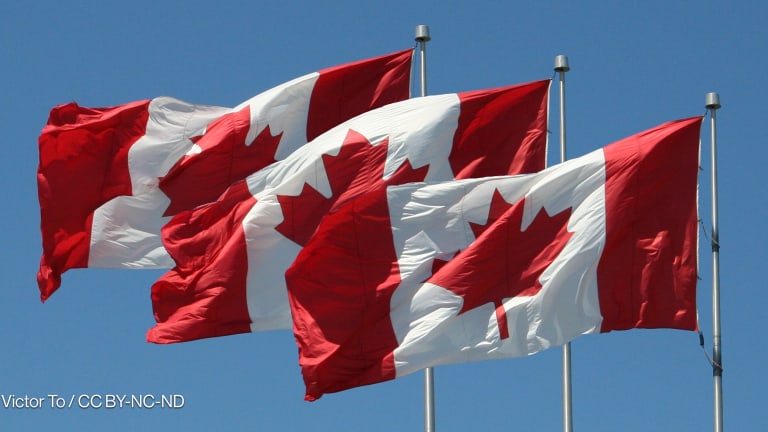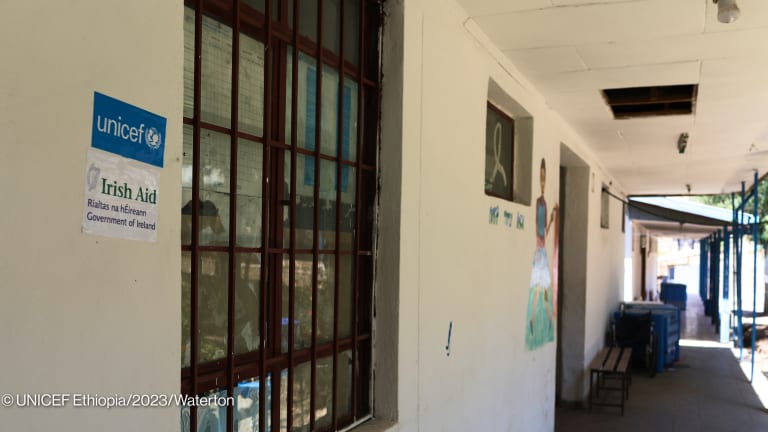German aid: A primer
Germany is the second biggest aid provider in 2020, next to the United States. Despite this, little is known about how the country spends its ODA. We look into its main aid agencies to know more.
In 2020, Germany’s official development assistance amounted to $28.4 billion, or 0.73% of its gross national income. This is up 13.7% in real terms from 2019, “making this the first year since 2016 that Germany has reached the 0.7% GNI-to-ODA target” set by the United Nations, according to Donor Tracker. That makes Germany the world’s second-largest donor country, behind only the United States, which had $35.5 billion for ODA in 2020. In this article, Devex examined Germany’s leading development agency, BMZ, and its two main implementing agencies, KfW and Deutsche Gesellschaft für Internationale Zusammenarbeit, or GIZ, to look at where Germany spends its ODA and on what. Data for this article is drawn from a number of sources, with the Organisation for Economic Co-operation and Development’s Development Co-operation Profile and German agencies principal among them. In all cases, the most recent figures available are used, meaning that some numbers cover 2021 while others are for 2020. Germany’s net ODA-to-GNI ratio rose significantly in recent years, from 0.35% in 2009 to 0.67% in 2017. Then from 2018 to 2020, Germany’s ODA grant equivalent-to-GNI ratio — OECD’s new methodology for measuring ODA — increased as well, from 0.61% to 0.73%. Germany’s ODA comes from the budgets of different ministries. The Federal Ministry for Economic Cooperation and Development, known as BMZ, accounts for the largest share — 51% of the country’s ODA in 2019, based on OECD data. Also that year, 12.9% came from the Federal Foreign Office, 12.3% from KfW Development Bank, and 5.3% from federal states and local governments. The remaining 18.6% came from other agencies. BMZ and the 2030 reform strategy In 2020, BMZ published a new plan that aims to make funding more strategic. Under the 2030 reform strategy, the agency will give more focus on countries that made little to no progress, using key areas such as anti-corruption, good governance, and human rights as criteria. This will reduce the number of countries BMZ is cooperating with, from 85 to 60. For countries that have already made significant progress, cooperation will shift to other areas, such as civil society and private investment. According to 2021 German government figures, the budget for BMZ amounted to €12.43 billion. Of this, €5.97 billion, or 48.1%, went in bilateral aid to other governments, while €2.62 billion, or 21%, went through the multilateral system. The remaining budget, worth €3.8 billion, went to other areas, which BMZ lists as civil society; special initiatives; food security and environmental protection; and other grants. KfW Development Bank The KfW Development Bank is Germany’s lead agency for bilateral financial cooperation. It receives funding from BMZ but also raises its own funds through capital markets. KfW supports partner countries in three ways: • Grants, which are mostly provided to low- and middle-income countries. • Development loans, which are funded through KfW’s budget combined with the funds raised on the capital market. • Promotional loans, which are entirely funded through funds raised on the capital market. KfW’s total commitment in 2020 amounted to €11 billion, with €4 billion committed for COVID-19 response in 42 countries. Among recipient regions, the largest share went to Africa and the Middle East, at €5.2 billion. Projects focused chiefly on reform and economic and social development. For example, the Compact with Africa, an initiative of the Group of 20 major economies, supports reforms in different sectors in Côte d'Ivoire, Ethiopia, Ghana, Morocco, Senegal, Togo, and Tunisia. Other projects include BMZ’s Special Initiative on Training and Job Creation and AfricaGrow, a joint fund for small- and medium-enterprises funded by KfW, DEG, and Allianz Group. Asia received €2.9 billion, while €1.3 billion went to Latin America, and €1.1 billion to Europe and the Caucasus region. A further €500 million was allocated for cross-regional projects. By sector, the biggest allocation went to finance, at €2.4 billion. Other priorities included government and civil society, with €1.7 billion, and energy, with €1.2 billion. The rest of the budget, worth €5.7 billion, was divided into 13 other thematic sectors. GIZ GIZ is the agency tasked with the planning and execution of Germany’s technical cooperation with partner countries. It was created in 2011 through a merger of three agencies: the Deutscher Entwicklungsdienst, Deutsche Gesellschaft für Technische Zusammenarbeit, and InWEnt. GIZ provides technical assistance across a wide range of areas, including the environment, economic development, governance, rural and social development, and project management. Its business volume in 2020 was around €3.3 billion, which was 9% higher than the previous year. This is made up of income from what it calls its “public-benefit business area,” in which BMZ is the largest client, with $2.75 billion, and the GIZ International Services business area. GIZ also contributed to BMZ’s Emergency COVID-19 Support Programme, with €253 million earmarked in 2020. Some of its activities include: • Training on infection prevention and response for staffers of 10 international airports in East Africa, awarded to AMREF Flying Doctors. • Advising and supporting the Moldovan Ministry of Economy and Infrastructure on sustainable growth for businesses and jobs. • Setting up a platform for the Identification of Poor Households Programme — known as IDPoor — in Cambodia on behalf of BMZ and the Australian Department of Foreign Affairs and Trade. • Supporting the Sustainable Facility Management in Public Schools in Lebanon project, which targets Lebanese children and Syrian refugee children in the country. • In collaboration with the United Nations Development Programme, supporting five flower farms in Colombia to transition to a greener cooling system for their projects. • Advising the South African Department of Forestry, Fisheries and the Environment, as well as the city governments of Durban and Pretoria, on green bonds. Update, June 22, 2022: This article has been updated to reflect links to OECD database. Try out Devex Pro Funding today with a free five-day trial, and explore funding opportunities from over 850 sources in addition to our analysis and news content.
In 2020, Germany’s official development assistance amounted to $28.4 billion, or 0.73% of its gross national income. This is up 13.7% in real terms from 2019, “making this the first year since 2016 that Germany has reached the 0.7% GNI-to-ODA target” set by the United Nations, according to Donor Tracker.
That makes Germany the world’s second-largest donor country, behind only the United States, which had $35.5 billion for ODA in 2020.
In this article, Devex examined Germany’s leading development agency, BMZ, and its two main implementing agencies, KfW and Deutsche Gesellschaft für Internationale Zusammenarbeit, or GIZ, to look at where Germany spends its ODA and on what.
This story is forDevex Promembers
Unlock this story now with a 15-day free trial of Devex Pro.
With a Devex Pro subscription you'll get access to deeper analysis and exclusive insights from our reporters and analysts.
Start my free trialRequest a group subscription Printing articles to share with others is a breach of our terms and conditions and copyright policy. Please use the sharing options on the left side of the article. Devex Pro members may share up to 10 articles per month using the Pro share tool ( ).
Miguel Tamonan is a Senior Development Analyst at Devex, where he analyzes data from public and private donors to produce content and special reports for Pro and Pro Funding readers. He has a bachelor’s degree in Political Science with a Major in International Relations from the Polytechnic University of the Philippines.








